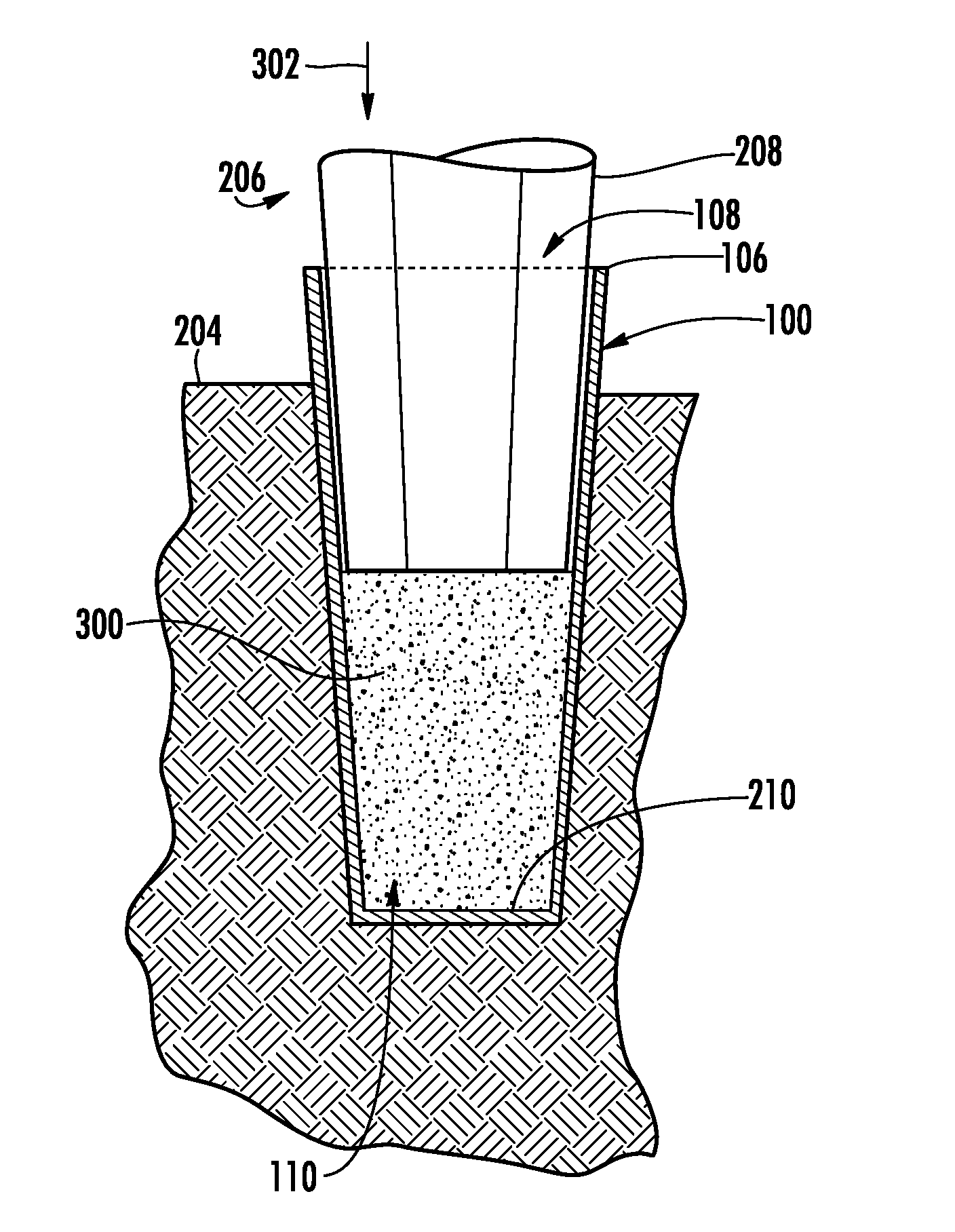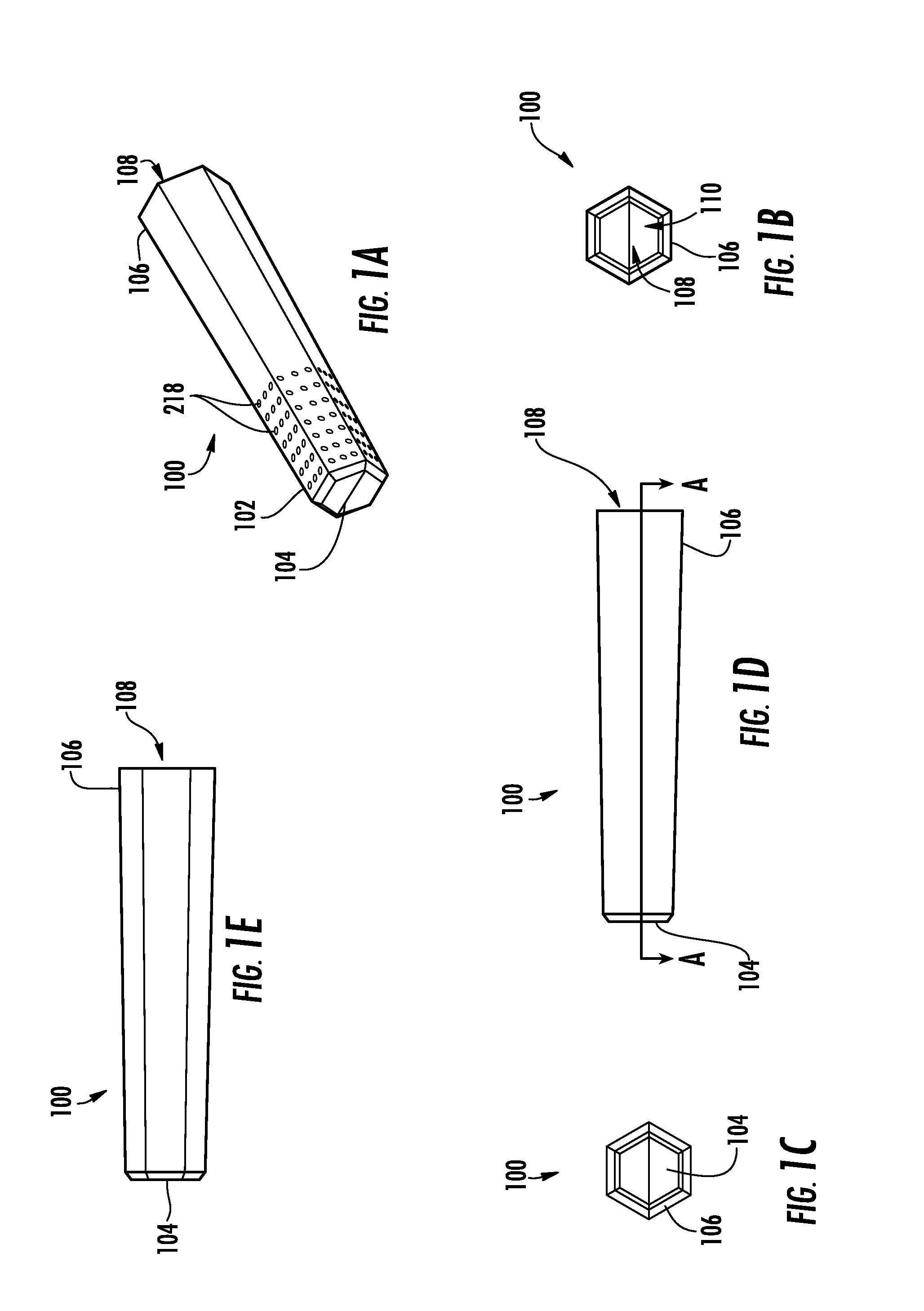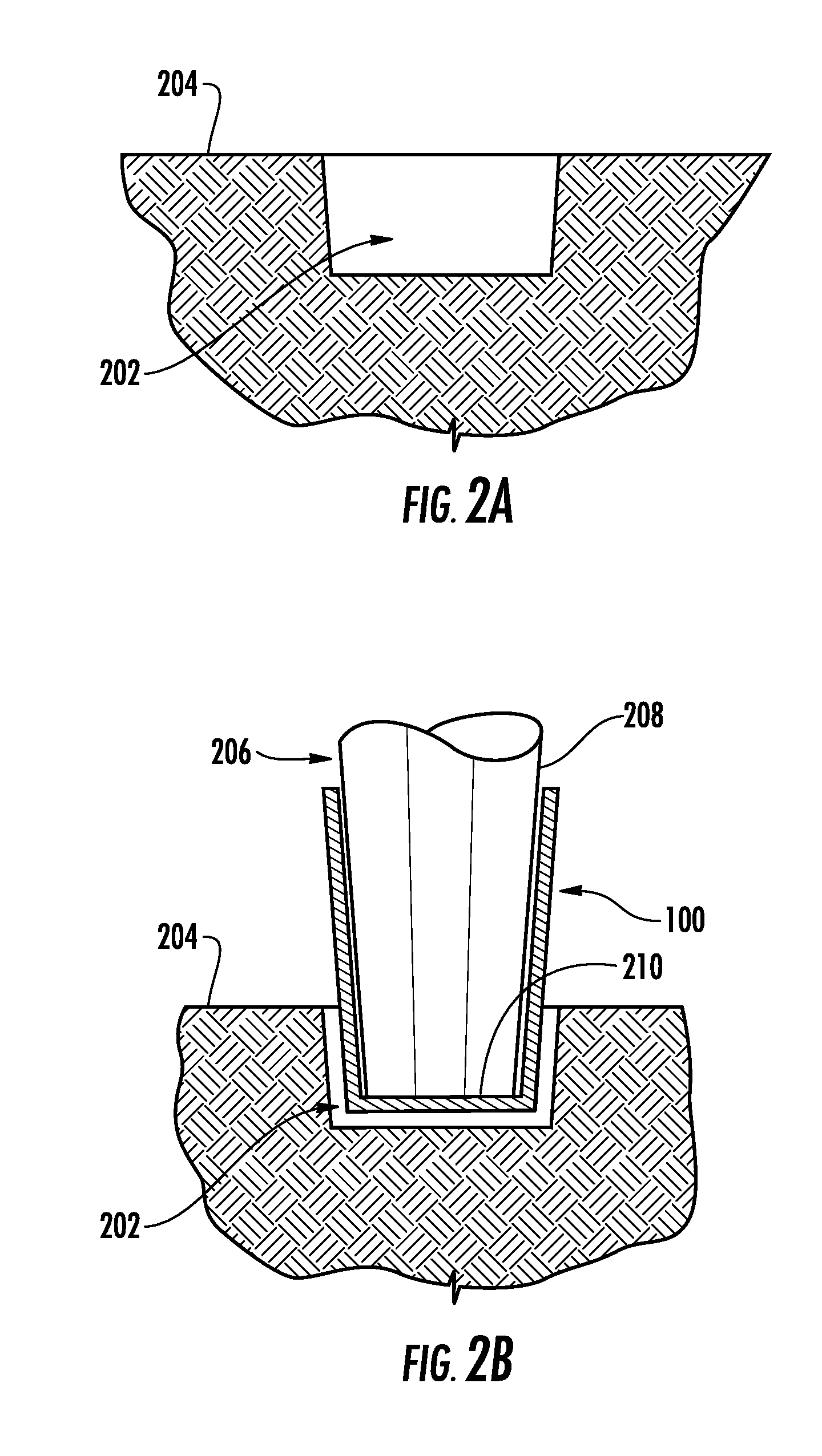Extensible Shells and Related Methods for Constructing a Support Pier
a technology of support piers and shells, which is applied in the direction of foundation engineering, construction, caissons, etc., can solve the problems of inability to extend the shells of prior art, inability to carry heavy loads, and inability to meet the requirements of the application
- Summary
- Abstract
- Description
- Claims
- Application Information
AI Technical Summary
Benefits of technology
Problems solved by technology
Method used
Image
Examples
example i
[0041]As an example, piers were constructed using extensible shells in accordance with embodiments of the present invention at a test site in Iowa. Load tests were conducted on the piers using a conventional process. The extensible shells used in the tests and the methods of their use consisted essentially of that described above and shown in the attached Figures. In this test, extensible shells formed from LEXAN® polycarbonate plastic were installed at a test site characterized by soft clay soil. This testing was designed to compare the load versus deflection characteristics of an extensible shell in accordance with the present invention to aggregate piers constructed with a driven tapered pipe. Two comparison aggregate piers (of fine and coarse aggregate) were constructed to a depth of 12 feet below the ground surface.
[0042]In this test, the extensible shell was formed by bending sheets of the plastic to form a tapered shape having a hexagonal cross-section and that tapered downwa...
example ii
[0046]In other testing, extensible shells were formed from high-density polyethylene polymer (“HDPE”) and installed at the test site as described in Example I. This testing program was designed to compare the load versus deflection characteristics of this embodiment of the present invention to aggregate piers constructed with a driven tapered pipe as described in Example I. A total of six shell piers were installed as part of this example.
[0047]In this test, the extensible shell was formed by a rotomolding process. The shells defined a tapered shape having a hexagonal cross-section and that tapered downward from an outside diameter of 585 mm (23 inches) at the top of the shell to a diameter of 460 mm (18 inches) at the bottom of the shell. The bottom of the extensible shell was integrally constructed as part of the shell walls as a result of the rotomolding process. The mandrel in this embodiment was attached to the same hammer as described in Example I.
[0048]The installation proces...
example iii
[0051]In another test, an extensible shell of the same embodiment described in Example II was installed at the test site as described in Example I. This testing program was designed to compare the load versus deflection characteristics of this embodiment of the invention to aggregate piers constructed with a driven tapered pipe as described in Example I. The mandrel, hammer, and extensible shell used for testing were the same as used in Example II.
[0052]In this embodiment of the present invention, the installation process included pre-drilling a 30 inch (0.76 m) diameter cavity to a depth of 3 feet (0.9 m) below the ground surface. The extractable mandrel was then inserted into the pre-drilled cavity, to create a cavity with a total depth of 5 feet (1.5 m) below the ground surface. This cavity was then backfilled to the ground surface with sand. The extensible shell was then driven vertically through the sand filled cavity with the extractable mandrel to a depth of 9 feet (2.7 m) be...
PUM
 Login to View More
Login to View More Abstract
Description
Claims
Application Information
 Login to View More
Login to View More - R&D
- Intellectual Property
- Life Sciences
- Materials
- Tech Scout
- Unparalleled Data Quality
- Higher Quality Content
- 60% Fewer Hallucinations
Browse by: Latest US Patents, China's latest patents, Technical Efficacy Thesaurus, Application Domain, Technology Topic, Popular Technical Reports.
© 2025 PatSnap. All rights reserved.Legal|Privacy policy|Modern Slavery Act Transparency Statement|Sitemap|About US| Contact US: help@patsnap.com



